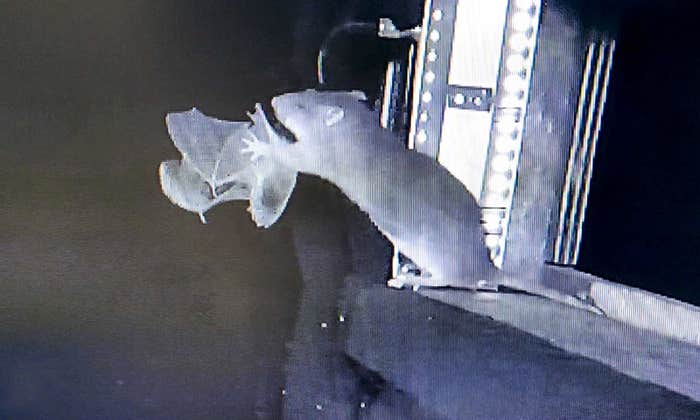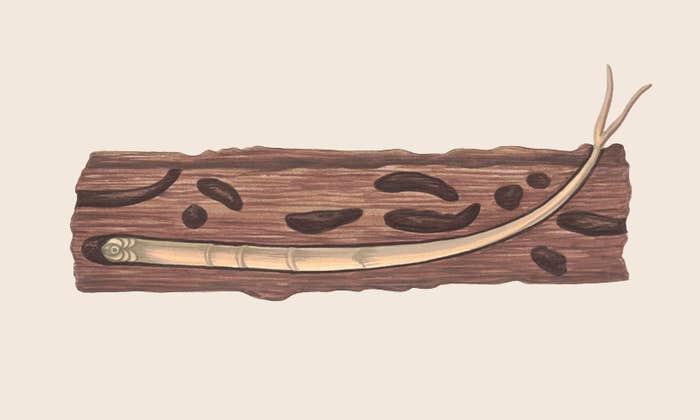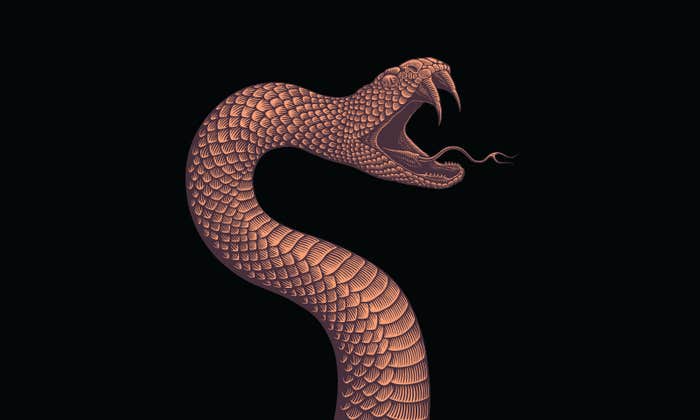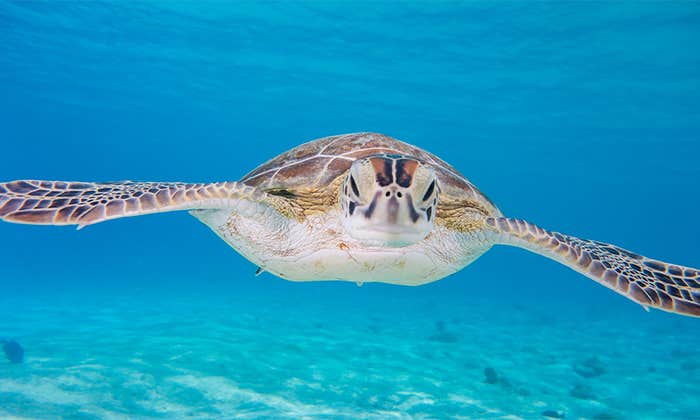We think our own relationships are wrought with lies and intrigues, but this is nothing compared to the lengths animals will go to in their efforts to pass on their genes to the next generation.
“The battle of the sexes is really ingrained in much of animal mating behavior,” says Karim Vahed, an entomologist from the University of Derby whose work focuses on sexual conflict. “The evolutionary interests of males and females over many decisions—like how often to mate, when to mate, who fertilizes the eggs—are often in conflict.”
As a result, the process of sperm fertilizing egg has led to some incredible examples of exploitation, manipulation, and deception. From the birds to the banana fiddler crabs, here are the great tricksters of sex.
Size Matters
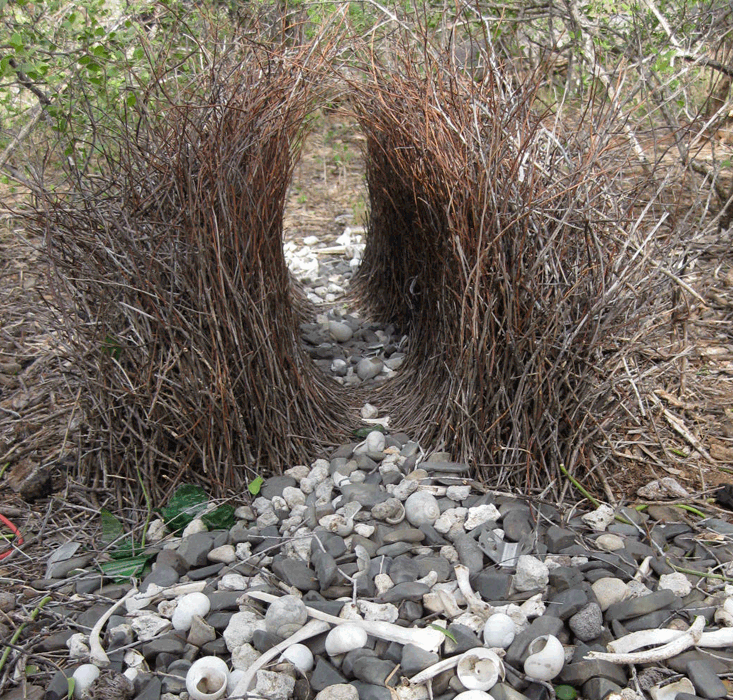
If you look up at Cinderella’s Castle in Walt Disney World, the iconic pink and blue-capped building will seem much larger than it actually is. The bricks, spires, and windows get smaller the higher up they are, tricking your brain into thinking that they are farther away. Such examples of “forced perspective” are commonplace in our architecture, past and present. In the open scrubland of northeastern Australia, another species may be using the same trick.
By constructing a bower—a structure composed of two parallel walls of sticks leading onto two courts containing an assortment of objects—male great bowerbirds (Ptilonorhynchus nuchalis) aim to woo a female with their building prowess and artistic aptitude. While inspecting the bowers of these large brown-grey birds near Queensland, John Endler, from Deakin University, Australia, noticed something quite peculiar: The collections of stones, bones, and bleached snail shells that cover the floor of their courts increased in size the farther they were from the thatched walls.
Consequently, when the female stands inside the alcove created by the two walls of sticks and looks out onto the court, this positive size-distance gradient creates the illusion that the ornaments are of the same size.1 Standing next to the thatched entrance, the male then parades a variety of colored objects in front of this monochrome, foreshortened background.2 Male great bowerbirds aren’t just adept builders and artistically compulsive hoarders; they are also illusionists. But what are the effects of such forced perspective?
The most complicated explanation is that this background makes the male’s bright decorations appear larger and more vibrant, increasing his attractiveness to the inquisitive female.3 But there is a second possibility. “It could just be that it makes the male’s display easier to see, because it’s against the nice uniform background,” says Laura Kelley, a behavioral ecologist from the University of Cambridge, United Kingdom, who studies optical illusions in animals.
Empty Gifts

The human male tradition of wooing women with chocolates can’t hold a candle to what goes on with decorated crickets (Gryllodes sigillatus). During sex, a female decorated cricket mounts the male. Then, after he has carefully placed his spermatophylax—a central capsule of sperm coated in a thick, detachable gelatinous layer—onto the female’s genital opening, she excitedly tears the outer layer away with her trembling mandibles and begins to feed. At the same time, the sperm capsule clings to the female’s reproductive tract and starts transferring the male’s ejaculate.
The sweet taste and gummy texture of this nuptial gift is irresistible to the female’s senses. But it imbues no benefit to her health or the number of offspring she can produce.4 “They’re a sham,” says Scott Sakaluk, a behavioral ecologist from Illinois State University who studies mating tactics in G. sigillatus. “What males in this cricket species are doing is offering females the equivalent of a gummy bear,” he explains. “Gummy bears are really tasty, but you can’t live off gummy bears.”
Instead, these tawdry gifts are employed as decoys. “Its primary goal is to keep the female happy and occupied during the time it takes for this insemination process to occur,” says Sakaluk. This can take 50 minutes in some cases. The larger the gift, the more time there is for transfer, increasing the likelihood that the male will be the father of some of the female’s offspring.
The males of other species can be equally deceptive. Dance flies and the nursery web spider, for example, cheat females if they can’t offer her a valuable food gift by wrapping a useless item, such as a dried insect fragment—or no gift at all—in silk.5 “It’s like giving someone an empty box of chocolates; by the time the female’s unwrapped it, the male has already had his wicked way,” says Vahed. “It’s really bizarre.”
Quick-Change Transvestites
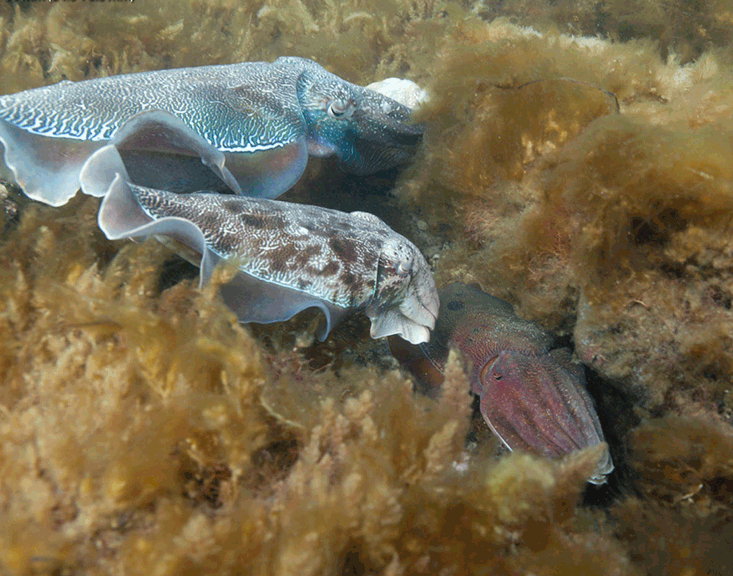
To avoid being eaten, cuttlefish (relatives of octopuses, squid, and nautiluses) can change the color, patterning, and texture of their skin to visually dissolve into their benthic, underwater worlds. To ensure that they get laid, the smaller males of the giant Australian cuttlefish (Sepia apama) sometimes become drag queens.
Their trick is to impersonate females in both appearance and behavior. In the blink of an eye, their skin becomes mottled, they hide their masculine fourth pair of arms underneath their body, and they position their other arms like an egg-laying female.6 When these cephalopods aggregate in vast numbers to copulate, as they do every winter in northern Spencer Gulf, South Australia, the larger males try to ensure that they are the only ones to transfer their sperm into the female’s storage organ through vehement guarding. If successful, she will then use his sperm to fertilize her large, individually laid eggs as she holds them in her arms.
But with a ratio as high as 11 males to every female, they often fail miserably. Other, smaller males can quickly dart in and mate with the female while the dominant male is occupied fighting with others. Sometimes, females swim away for a secret tryst under a nearby rock. By mimicking an egg-laying female, some males use subterfuge to swim past the dominant male unmolested and mate with his consort.
Such deceptive behaviour is highly rewarding. Not only because these males have been shown to fertilize the female’s egg immediately after sperm transfer, but because they have a mysterious way with the ladies. “Generally females reject 70 percent of all mating attempts, including the [dominant males, yet] they’re only rejecting the female mimics about 35 percent,” says Roger Hanlon from the Marine Biological Laboratory in Massachusetts. “They seem to be doubling their chances of getting a copulation.” In cuttlefish society, brain seems to be trumping brawn—at least some of the time.
Small and Stealthy Does It
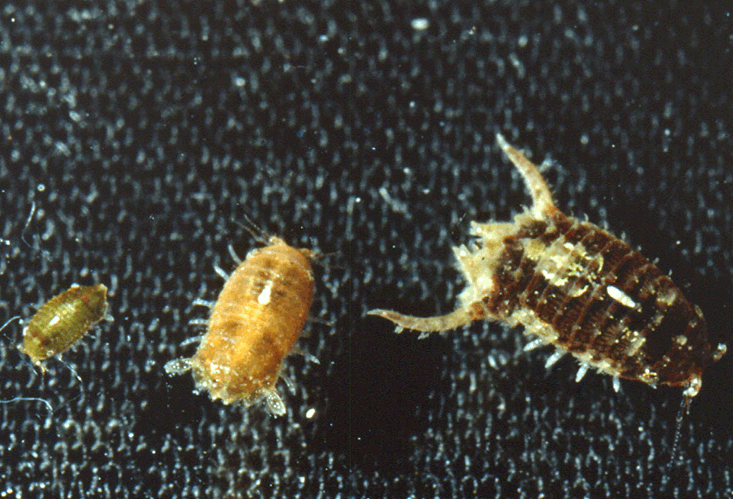
Turkish sultans were allowed to wed four wives, but marine isopods (Paracerceis sculpta) have as many as 20. They keep their “harems” inside the porous cavities of sea sponges (Leucetta losangelensis).7 At the entrance of these so-called spongocoels is usually an alpha male—strong, baroquely armoured, and ready to defend his females against competitors. If there is only a single female present, he can usually keep her for himself just by wrapping his many legs around her. But when his harem starts to grow, the opportunity for more cunning males arises.
There are males that look like females to gain access into the spongocoels. But there is an additional male morph, known as the gamma male, that uses a much simpler method of bypassing the big bouncer at the door: stealth. Being much smaller, speedier, and very much like a juvenile isopod in appearance, these males are able to dart into the cavity and hide in one of its many recesses. Once there, they wait for one of the virgin females to shed her external carapace, which removes her feeding mouthparts, exposes her two vaginas, and makes her sexually receptive.8
Gamma males differ from both female mimics and alpha males in one crucial trait during copulation, too: their investment in ejaculate. “Almost all of their body cavity is devoted to sperm,” says zoologist Stephen Shuster at Northern Arizona University. So even if they only get a few trysts, gammas still do just as well as alphas.1
Ugliness Is Relative
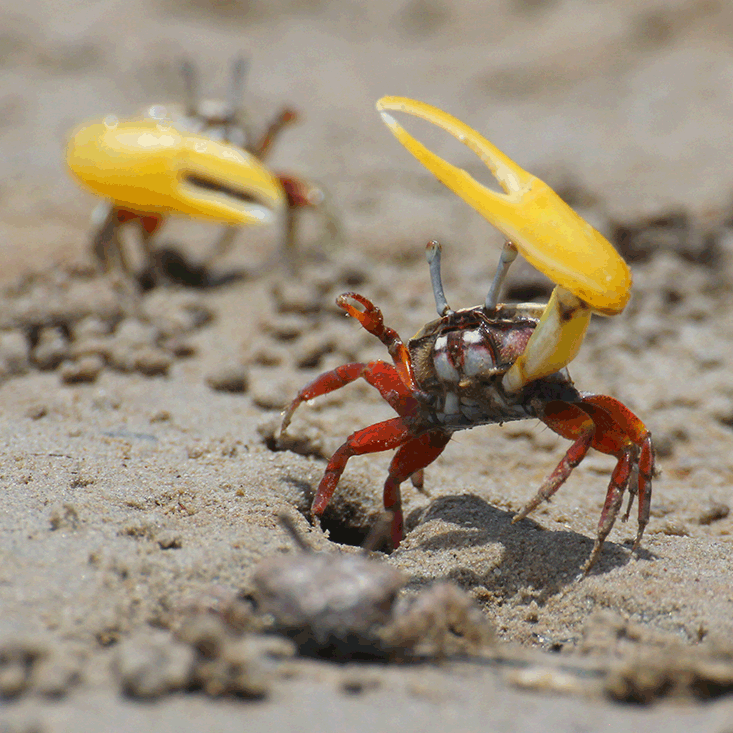
Ever heard that standing next to an ugly friend makes you look better? Male guppies have, too. They prefer to display next to drab males than more colorful ones, making themselves seem more attractive to female observers.9 In a frantic five to six days during the semilunar tides off the coast of Darwin, Australia, banana fiddler crabs (Uca mjoebergi) may be using a similar trick.
Males of this species aggregate in large territorial groups, build shallow bunkers in the mudflats, and possess one amusingly enlarged yellow claw that they wave at a passing females. Females quickly assess their options, generally preferring males with larger claws. But what if males could make their claws seem bigger by surrounding themselves with smaller males?
Although evidence of males actively associating with such inferior males is lacking, females have been shown to prefer males depending on who their neighbours are. When presented with a choice between five xanthic robotic claws—two large, two small, and one medium, focal claw—that act as simulacrums of the waving display of males, females have been shown to prefer the central claw when it was immediately next to smaller claws compared to larger ones. Why? One possible explanation is that it is just easier to judge the size between a small and medium-sized object than it is between a medium and large object—a phenomenon known as the “Weber effect.” But it could also be what’s called an Ebbinghaus optical illusion.10 “It’s a really simple idea,” says Kelley. “If you get an object of a particular size and if you surround it by bigger things it’s going to look smaller than if you had that same object surrounded by smaller things.”
Alex Riley is a science writer based in London. He also studies the teeth of sharks and rays at the Natural History Museum. Follow him on Twitter at @riley__alex

References
1. Kelley, L.A. & Endler J.A. Male great bowerbirds create forced perspective illusions with consistently different individual quality. Proceedings of the National Academy of Sciences 109, 20980-20985 (2012).
2. Endler, J.A., Gaburro, J., & Kelley, L.A. Visual effects in great bowerbird sexual displays and their implications for signal design. Proceedings of the Royal Society B, Biological Sciences 281, 20140235 (2014).
3. Kelley, L.A. & Endler J.A. Illusions promote mating success in Great Bowerbirds. Science 335, 335-338 (2012).
4. Will, M.W. & Sakaluk, S.K. Courtship feeding in decorated crickets: is the spermatophylax a sham? Animal Behaviour 48, 1309-1315 (1994).
5. Stalhandske, P. Nuptial gift in the spider Pisaura mirabilis maintained by sexual selection. Behavioral Ecology 12, 691-697 (2001).
6. Hanlon, R.T., Naud, M., Shaw, P.W., & Havenhand, J.N. Behavioural ecology: Transient sexual mimicry leads to fertilization. Nature 433 (2005). Retrieved from doi:10.1038/433212a
7. Shuster, S.M Alternative reproductive behaviours: three discrete male morphs in Paracerceis sculpta, an intertidal isopod from the northern Gulf of California. Journal of Crustacean Biology 7, 318-327 (1987).
8. Shuster, S.M. Male alternative reproductive strategies in a marine isopod crustacean (Paracerceis sculpta): The use of genetic markers to mearue differences in fertilization success among α-, β-, and γ- males. Evolution 43, 1683-1698 (1989).
9. Gasperini, C., Serena, G., & Pilastro, A. Do unattractive friends make you look better? Context-dependent male mating preferences in the guppy. Proceedings of the Royal Society B, Biological Sciences 280, 20123072 (2013).
10. Kelley, L.A. & Kelley, J.L. Animal visual illusion and confusion: the importance of a perceptual perspective. Behavioral Ecology (2013). Retrieved from doi: 10.1093/beheco/art118























